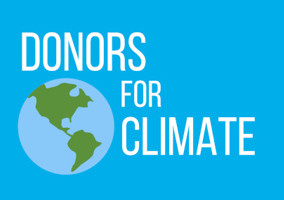In the absence of transparency it is very difficult for outsiders to challenge what happens behind the doors of organisations. Some would say being transparent is akin to opening the curtains and leaving them wide open for the world to have a look. Drawing open the curtains is a way for people to peep in and see what’s happening beyond the façade of a home, an organisation, an entire industrial sector.
Others would go further and say true transparency is leaving the door wide open and allowing the public to not only look, but to open the drawers, look under the beds, check the water pressure. However far we choose to take this analogy, the bottom line is that there are no effective ways of holding organisations accountable to external scrutiny if they do not share what they are currently doing and how they intend to improve it.
This is particularly true when it comes to diversity and inclusion. The environmental, conservation and sustainability sectors are widely seen as doing “good”. There is a halo above the work they do because we ultimately imagine they are trying to save our planet, improve our relationship with nature, and force governments and corporations to do the right thing in the face of obvious crisis.
Protected from scrutiny
This halo effect and the relative historical smallness of the sector have served to protect its teams from external scrutiny around issues of social justice. Who gets to work in conservation? Who gets to be involved in designing and delivering on environmental solutions? What level of previous volunteering (and hence privilege) is required to get a job in the sector? These are important questions to be asking if the good the sector is doing is to be seen as truly wholesome and serving everyone.
The above challenges - full transparency and challenging the sector and its funders to deliver on social justice - are the drivers behind the Race Report. The idea for the report came out of research I was doing three years ago into the work of Dorceta Taylor – a pioneer of environmental justice in the United States. As an inclusion and equity adviser working predominantly with environmental issues and organisations, her work gave me the necessary clues I needed to begin to look at the exclusion of marginalised communities from a sector seeking to present itself as essentially “good”.
In books such as Toxic Communities, Dr Taylor had exposed the prevailing environmental issues that disproportionately affected marginalised people in our society, and the impact this had on society and nature. My interpretation of her work was that without greater racial and ethnic diversity in environmental organisations, university departments, sustainability teams, activist movements and so on, the sector would remain out of touch with many of the communities it claimed to serve.
Green 2.0, a project co-founded by Dr Taylor, became a great inspiration for the work I wanted to achieve in the UK. At an Institute of Environmental Management & Assessment meeting on diversity in 2020, Jamie Agombar, CEO of Students Organising for Sustainability, took that message much more seriously than I expected, and two years on we have a strong partnership looking to deliver something similar to Green 2.0 here in the UK. Something purpose-made for the UK landscape.
Esmee Fairbairn have put forward the first bulk of the money to get this off the ground as well as opened the door for their own diversity data to be analysed. Hindu Climate Action, South Asians for Sustainability and Nature Youth Connection and Education form the rest of the founding partners.
Greater chance of improving their racial diversity if they were open
The idea is very simple. Every environmental, sustainability and conservation organisation and the people that fund them would have a much greater chance of improving their racial diversity if they were open about the current state of representation and inclusion in their current teams. They would then be publicly accountable and open to both critique and support. They would be able to learn best practice from others doing well on this front.
All of this data will go into the Race Report which will be a unique resource for the sector, the public, the press and academics to benchmark and track how the sector is doing in its bid to be more inclusive. The first year of the Report will be anonymised and show aggregated data.
Beyond that the Report will become specific and name organisations above a certain size. There will be a recognition of the specific contexts within which organisations are working. The only thing worse than no data is misleading data.
Sector needs to prove it is serving everyone
The urgency for this work is not to be underestimated. In the face of hyper-ecological damage and the reality of climate change, this fast-growing sector needs to prove it is serving everyone, employing everyone and open to constructive challenge. That only 4.8% of the sector’s employees are from minority backgrounds is simply not good enough. Many of our partners in the sector know this and have started to sign up to be included in the Report.
Throughout the summer and autumn of 2022 we will be collecting their data and analysing it. We will then begin to tell the story of where the sector is, where it should be, and how it can get there.
The “green sector” has become four times larger than manufacturing in the UK (IPCC, 2021). It is essential to ensure that this growth not only meets the environmental agendas of our time but is delivered by and for as wide a cross-section of our society as possible. Good evidence of who is missing from that workforce - in both for-profit and charitable institutions - will be key to tackling socio-economic equality alongside combating climate change and reversing ecological damage.
In short, the sector and its funders can’t improve on diversity and inclusion if it does not own up to what improvements are needed, and there is no way of knowing that without rigorous and transparent data collection. The ideal result of the Report will be better accountability, more collaboration, shared practice, greater amounts of funding going to minority-run environmental causes, and ultimately greater inclusion of previously voiceless communities.
This will not only be a quantitative exercise, but a measure of commitment to genuine inclusion, a real challenge to some of the structural forms of exclusion that have underpinned the environmental sector up to this point.
Manu Maunganidze is from the Race Report team
Related articles












